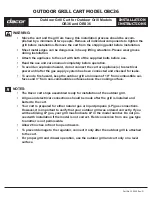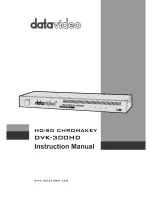
July 2019 – TD 304 OPERATING MANUAL – Doppler Current Profiler Sensor
Page 133
9.3
Checking the tilt sensor
The sensor has a 3-axis inclinometer. The tilt is converted to rotational angles pitch and roll. When the sensor is placed
horizontal the pitch and roll should be close to zero. Pitch is the rotation around the y-axis while roll is the rotation angle
around the x-axis. The x-axis is aligned with transducer 1 and 3 and the y-axis is aligned with transducer 2 and 4.
•
Place the sensor horizontal. See that the pitch and roll is close to zero.
•
Tilt sensor towards transducer 1 (transducer 1 downwards) and see that the pitch value is decreasing (more
negative).
•
Tilt the sensor in the opposite direction against transducer 3 and see that the pitch is increasing (positive).
•
Tilt the sensor towards transducer 2 and see that the roll value is increasing (positive).
•
Tilt the sensor towards transducer 4 and see that the roll value is decreasing (more negative).
•
Hold the sensor upside-down and horizontal. The roll should now be close to 180 degrees.
•
Place the sensor upside-down on a table on transducer 1. The pitch should be close to -25 degrees and the roll
close to 180.
•
Do the same now on transducer 3. The pitch should now be close to +25 degrees and the roll close to 180.
•
Do the same now on transducer 2. The roll should be close to 155 degrees while the pitch should be close to 0.
•
Do the same on transducer 4. The roll should be close to 205 degrees and the pitch close to 0. For software
version 8.2.1 and over, the roll range is ±180 so the roll reading should be close to -155.
NOTE: To check the value measured by the tilt and heading sensor refer to chapter 4.2. Viewing incoming data
in real-time.
9.4
Checking the acoustics
The best way to check the acoustics is to do a short pre-deployment where the sensor is hanging from a floating raft or
boat. Checking the signal strength from the different beams gives an indication on if some of the beams are much
weaker than the others. When checking the beam strengths close to the sensor, the signal strength should normally be
within 2-3dB between the different beams.
A weaker signal strength on all transducers than seen earlier is not necessarily an indication that something is wrong
with the sensor. The signal strength can show big variations during a year due to changes in biological activities, etc.
Some places variations of the backscatter conditions can give several dB in signal strength variation.
















































